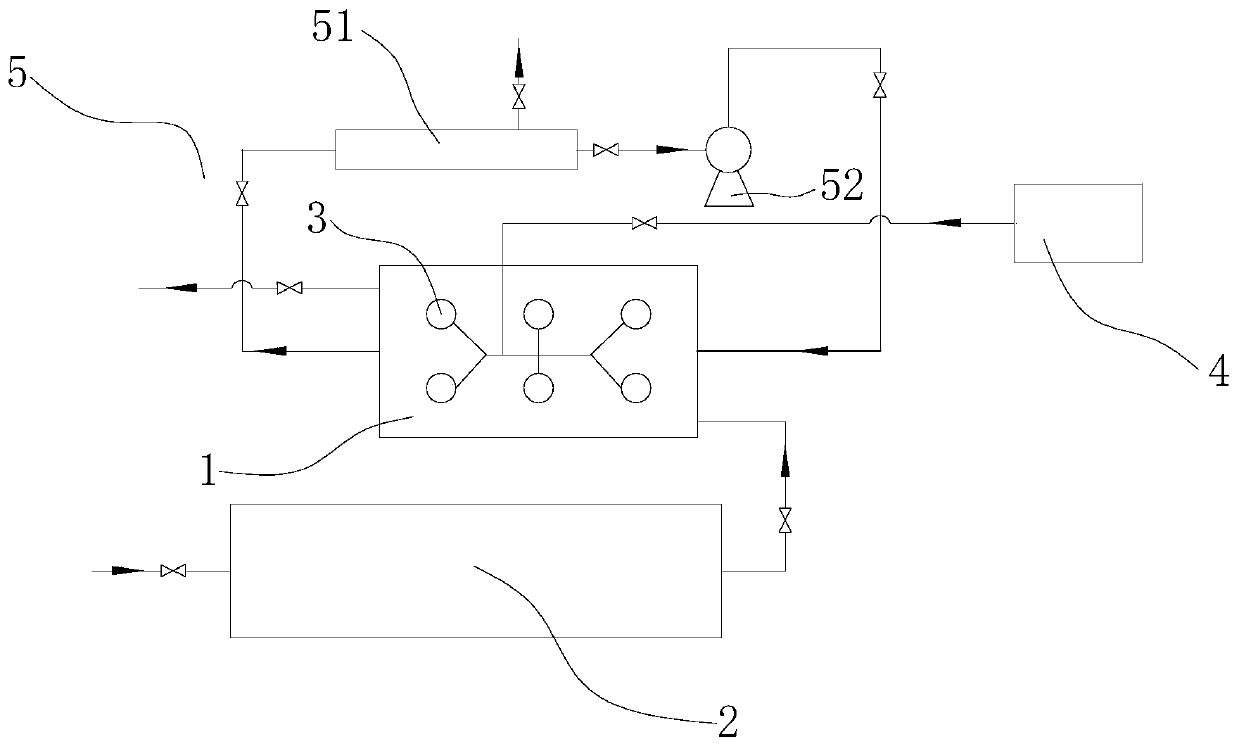A method for fattening and cultivating sea-caught wild swimming crabs in sand ponds
A technology of wild shuttle crab and breeding method, which is applied in the field of sea-caught wild swimming crab sand pond fattening and breeding, can solve the problems of high breeding environment requirements, high disease rate and mortality rate, reduce disease rate and mortality rate, improve economic benefits, and promote The effect of uniform dispersion effect
- Summary
- Abstract
- Description
- Claims
- Application Information
AI Technical Summary
Problems solved by technology
Method used
Image
Examples
Embodiment 1
[0026] A method for fattening and cultivating wild swimming crabs in a sand pond, comprising the following steps:
[0027] (1) Temporary cultivation pond preparation: Temporary cultivation pond 1 is 10 m wide and 20 m long. Aerator 3 is installed in the pond, preferably diaphragm aerator. The number of aerators is 6 per mu. Connect to each other with the air compressor pump 4 through the ventilation pipe, set the gravel layer at the bottom of the holding tank, the thickness of the gravel layer is 15 cm, and the particle size of the gravel is 0.6 cm. In order to suppress the deterioration of water quality, a circulating water pipeline 5 comprising a water filter 51 and a water pump 52 is set, and the holding tank is arranged in series with the water filter and the water pump in the circulating water pipeline, and the inner wall of the water filter is provided with an ultraviolet lamp. There is a water purification tank 2 for holding seawater on the side of the holding pool. Bio...
Embodiment 2
[0033] A method for fattening and cultivating wild swimming crabs in a sand pond, comprising the following steps:
[0034](1) Temporary cultivation pond preparation: Temporary cultivation pond 1 is 15 m wide and 30 m long. Aerator 3 is installed in the pond, preferably diaphragm aerator. The number of aerators is 8 per mu. Connect to each other with the air compressor pump 4 through the ventilation pipe, set the gravel layer at the bottom of the holding tank, the thickness of the gravel layer is 20 cm, and the particle size of the gravel is 0.8 cm. In order to suppress the deterioration of water quality, a circulating water pipeline 5 comprising a water filter 51 and a water pump 52 is set. There is a water purification tank 2 holding seawater on the side of the breeding tank. Bioflocculant NOC-1 is added to the seawater in the water purification tank. The outlet of the water purification tank is equipped with a filter screen, and the mass concentration of spraying to the hold...
Embodiment 3
[0040] A method for fattening and cultivating wild swimming crabs in a sand pond, comprising the following steps:
[0041] (1) Temporary cultivation pond preparation: Temporary cultivation pond 1 is 20 m wide and 40 m long. Aerator 3 is installed in the pond, preferably diaphragm aerator. The number of aerators is 10 per mu. Connect to each other with the air compressor pump 4 through the ventilation pipe, set the gravel layer at the bottom of the holding pond, the thickness of the gravel layer is 25 cm, and the particle size of the gravel is 1.2 cm. In order to suppress the deterioration of water quality, a circulating water pipeline 5 comprising a water filter 51 and a water pump 52 is set. There is a water purification tank with seawater on the side of the breeding tank. The biological flocculant NOC-1 is added to the seawater in the water purification tank. Disinfect with bleach solution, then expose to the sun for 5 days;
[0042] (2) Sanding and water injection: Inject...
PUM
 Login to View More
Login to View More Abstract
Description
Claims
Application Information
 Login to View More
Login to View More - R&D
- Intellectual Property
- Life Sciences
- Materials
- Tech Scout
- Unparalleled Data Quality
- Higher Quality Content
- 60% Fewer Hallucinations
Browse by: Latest US Patents, China's latest patents, Technical Efficacy Thesaurus, Application Domain, Technology Topic, Popular Technical Reports.
© 2025 PatSnap. All rights reserved.Legal|Privacy policy|Modern Slavery Act Transparency Statement|Sitemap|About US| Contact US: help@patsnap.com

